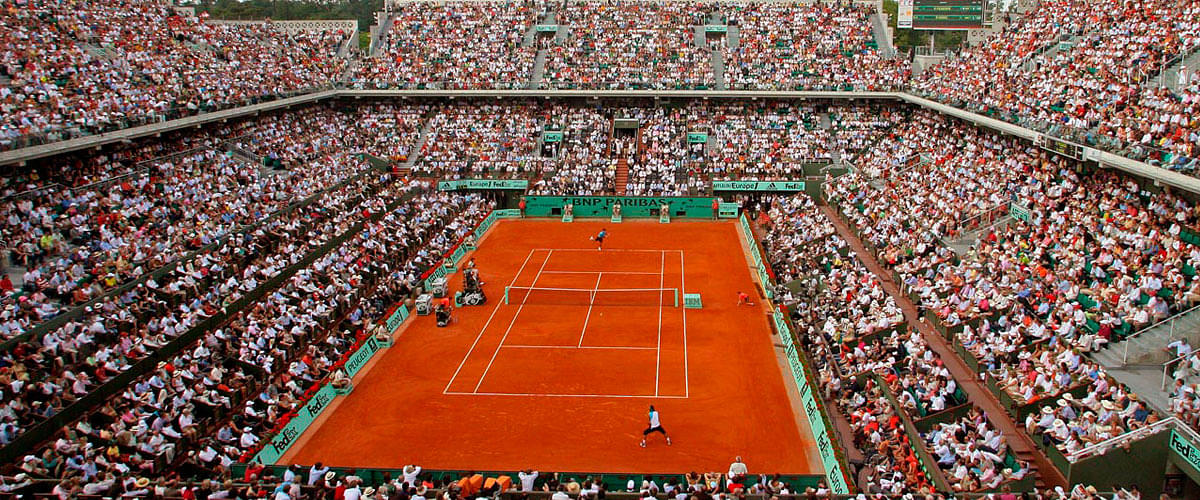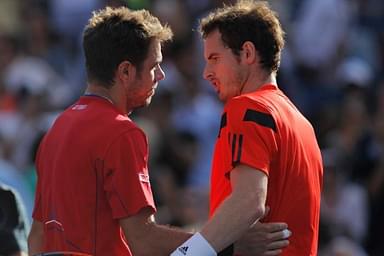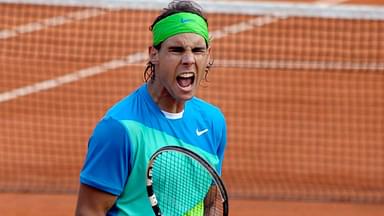The French Open has finally arrived and we cannot be more thrilled about it. The second Grand Slam of the year is eagerly waited by tennis fans all over the world, as there is something very quaint about this amazing competition. This year’s event has already had its fair share of surprises, as the likes of Roger Federer and Maria Sharapova will not be taking part at Roland Garros, albeit for very different reasons. So here are five interesting facts about the French Open.
Where does the name come from?

Although it’s known all over the world simply as the French Open, the tournament’s full name is Internationaux de France de Roland-Garros. Rolland Garros was a French Aviator and a World War I pilot. “He was an early pioneer in the development of fighter aviation,” says Peter Jakab, chief curator at the U.S.’s Smithsonian National Air and Space Museum.
ALSO READ : Novak Djokovic hopes that Agassi can inspire him back to the world number one spot
Garros gained notoriety not particularly for his flying skill but for his innovative ways to transforming the architecture of fighter planes. He developed a means of allowing a machine gun to be fired forward through a plane’s propeller arc. Garros also survived being the Prisoner of War after being captured by the Germans.
Is the Clay surface really Clay?

No. It is not. Originally the use of clay was merely a practical consideration. The Renshaw Brothers, back in 1880 in Cannes, apparently used powdered terra cotta to cover grass courts that were wilting in the heat. Since then, technology has obviously developed but the concept remains the same. The earth is covered with a total of five layers each around 80 centimetres in depth: the first is made up of stones, followed by gravel, clinker (volcanic residue), limestone and finally a thin layer of crushed brick about two millimetres thick, giving the courts their ochre hue.
Drawing the lines on the surface is a daunting task too. The lines are marked out with thread and scraped to 6cm wide, down to the limestone layer. A thin coat of linseed oil is first applied for better adherence, and then two coats of white paint are applied.
Who is the youngest winner of French Open?

At the tender age of 17, Michael Chang of the United States became the youngest ever winner of the men’s tournament. It was in 1989 French Open where he defeated Stefan Edberg in the final over five sets and became the youngest player ever to lift the Coupe des Mousquetaires. He had to overcome some big names to take the title, including Eduardo Masso, Pete Sampras and Ivan Lendl. Although Chang was only seeded 15th in the tournament, he beat Lendl, who was at that time the number one player in the world and then 3 times French Open champion, in the fourth round. The match lasted 4 hours and 37 minutes.
Monica Seles won her first Grand Slam, defeating Steffi Graf in the final, 7–6 (6), 6–4, saving four set points in the first set tiebreaker. Aged 16 and 6 months, she became the youngest ever Grand Slam Singles winner. Seles remains the youngest French Open champion.
Who has won the most French Open titles?

It is none other than the King of Clay, Rafael Nadal, with 9 titles to his name. He hopes to wear the crown for the tenth time this year in 2017. He holds an all-time record for maximum Grand Slams won in a single tournament. He won his first title in 2005 at the age of 19, in Paris. He went on to win the same title in 2006, 2007, 2008, 2010, 2011, 2012, 2013, and 2014.
ALSO READ : Have you picked your favorite for the French Open?
American tennis legend Chris Evert holds the record for the most women’s singles titles, with an impressive seven. She first won the title in 1974, at the age of 19, then went on to win it again in 1975, 1979, 1980, 1983, 1985 and 1986. She was 31 when she won her final French Open women’s singles title in 1986, beating Martina Navratilova over three sets in the final.
What’s unusual about the stadium?

It is size of the stadium, the Centre Court. The main court at the Roland Garros Stadium is the Court Philippe Chatrier, which has a capacity of around 14,500, but it’s the venue’s overall size and capacity that makes this the smallest of all the Grand Slam venues.
Wimbledon, played at the All England Lawn Tennis and Croquet Club, boasts of 19 grass courts and eight clay courts, together with five indoor courts, two acrylic courts and 22 Aorangi Park grass courts, used for practice matches by players. The largest courts are Centre Court, which can seat 15,000 spectators, and No.1 Court, that has a capacity of 11,500.
The US Open is held at the USTA Billie Jean King National Tennis Center in New York, and the venue’s three main courts are among the largest tennis venues in the world. The Arthur Ashe Stadium has a capacity of 23,000, making it the largest of all.
The Australian Open is played at Melbourne Park, where the main court, the Rod Laver Arena, has a capacity of 15,000. The second largest court, the Hisense Arena, has a capacity of 10,500.






